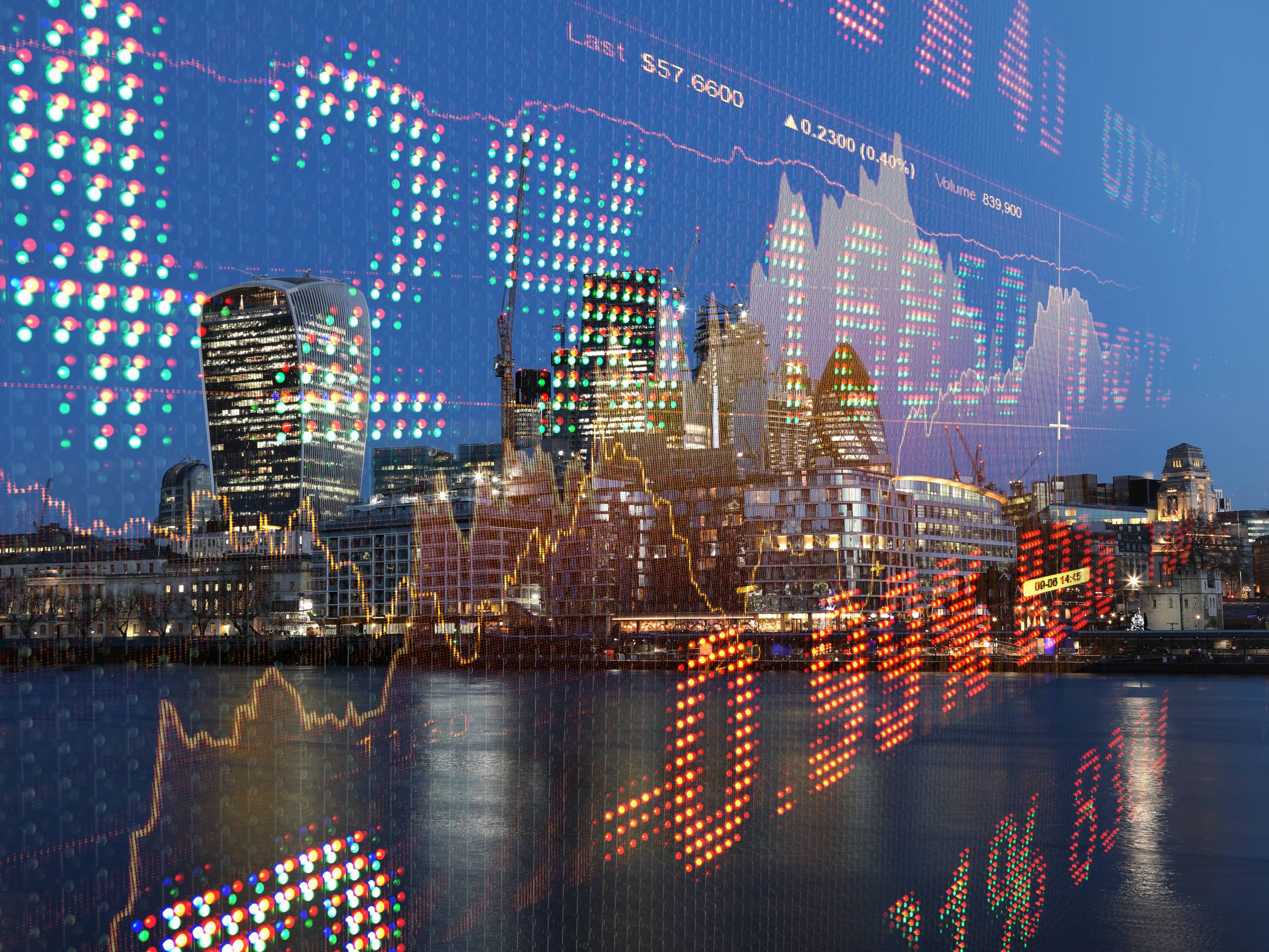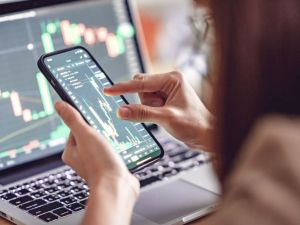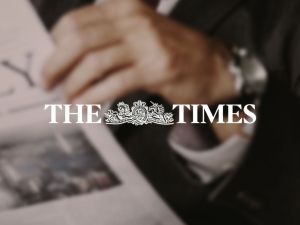If you’re exploring the world of investing for the first time, you will inevitably come across the initials ‘ETF’. One of your first questions is likely to be, what does ETF stand for? The answer is that it stands for ‘Exchange Traded Fund’, an umbrella term used in the trade to cover a number of ETF investment package options.
ETF meaning explained
An Exchange Traded Fund, or ETF for short, is a type of investment fund designed to track an index. It aims to keep tabs on commodities, stocks and shares etc., that are traded on the stock exchange. An ETF envelope has a variety of asset types within it. This is one of its main attractions to investors because it offers diversity, and diversity helps to spread out risk.
There are two basic types of funds. The first are those that are maintained by managers who use their knowledge, skill and expertise in an attempt to beat the market. The second type doesn’t try to beat the market – it is simply designed to track it. The first type are known as active funds, and the second are known as passive funds. Of the two types, you might ask yourself what is an ETF fund? The answer – it is a passive fund, or usually it is. For more information, see active or passive ETFs further below.
The types of ETFs
Since the first ETF was listed on the London Stock Exchange back in April 2000, the popularity of this type of investment has exploded. As of the end of 2020, there were 7,602 ETFs available worldwide. When you ask what is an ETF, it can be one one of several types, including:
- Bond or Fixed Interest ETFs
- Commodity ETFs
- Currency ETFs
- Equity ETFs
- Factor ETFs
- Speciality ETFs
- Sustainable ETFs
The ETF meaning to which most apply is one of low cost, diversified investing. Improvements in the world of tech have made it easier and cheaper to trade in ETFs in whatever markets you so desire (FTSE100, Nasdaq, the Hand Seng) or with whatever asset type or asset mixture.
How do ETFs work?
What is an ETF in investing terms? It is a fund incorporating a basket of assets that are traded on the open stock market. In other words, they can be bought and sold at any time throughout the trading day. Most other funds are only traded once a day.
Yes, you can request a trade throughout the day, but it won’t happen immediately. It has to wait for the next available trade point, which usually comes at close of business.
When ETFs are traded, they are given two prices – their “ask price” and their “bid price.” The ask price if the one at which you can buy, and the bid price is the one at which you sell. The difference between the two is referred to as the “spread”.
How to choose the best ETF
With well over 7,000 ETFs to choose from today, picking the right one is no easy task – even for a seasoned investor. However, there are some basic steps you can take in order to define what is an ETF that is best for you.
The first thing you need to do is to choose a market segment – basically, the kind of asset in which you prefer to invest. You can, for example, select an asset class, a commodity, equity or a fixed-income ETF.
Next, you can narrow your choices down further into things like geographical region or stock exchange, whether you go with small, medium, or large companies, or whether you elect for a specific economic sector. You can also follow a particular theme of personal interest, such as A.I. or electric cars.
Active or passive ETFs?
Originally, ETFs were created as passive vehicles, looking to replicate the return on underlying market indices. Now, however, there is a small but quickly expanding number of actively managed ETFs. What is an ETF when it’s actively managed? It is a vehicle that is designed to outperform the benchmark. Last year, in the first five months, more active ETFs work launched than passives.
There is also another vehicle, known as “smart beta”, that bridges the gap between active and passive ETFs. Employing this type of concept, a fund attempts to build a portfolio with specific biases linked with outperformance characteristics such as generation divisions, momentum, small or low size volatility, and value.
The cost of active portfolios is usually higher than passives. The increase is to cover the costs of the management fees. Many passives are operated with Robo-advisors, where costs are significantly lower.
ETFs and tax
What is an ETF in terms of tax is another important consideration. The way that an ETF is taxed should also be a consideration, especially here in the UK.
Under our current taxation system, any ETFs that are domiciled outside of the UK are treated as offshore investments as far as UK taxpayers are concerned. In other words, any gains, whether they are concerning income or capital, will be treated as income and will be subject to tax based on an individual investors tax profile.
There are, however, some offshore ETFs that have UK reporting status. These are treated from a taxation point of view as though they were UK funds. It means that any capital gains from part or full sale of the funds will be taxed at a flat rate. You need to bear in mind, though, that different countries have different tax rules.
How to invest in ETFs
When we talked about what’s an EFT at the beginning of this article, we said that they trade in the same way as shares on the stock exchange. They are relatively easy to add to your investment portfolio. Most ETFs can be held in an investment vehicle such as an ISA. These are tax-efficient funds that protect your returns in terms of capital gains and income tax.
However, it’s important to check with the EFT provider before you make a decision in order to ascertain whether a particular package is eligible to be put into an ISA. As it stands at this point in time, you are able to put £20,000 tax-free into an investment ISA package.
There is another option whereby you can split your investment between a cash investment, a lifetime ISA, or innovative finance, so that any gains will be exempt from income or capital gains tax. However, you have to bear in mind that when it comes to a lifetime ISA, the maximum you can invest is £4,000.
Of course, tax rules change all the time, therefore you need to keep a watchful eye on how any changes might affect your circumstances.
Some real-world examples of ETFs
As we explained earlier, some ETFs track indices of stocks, thus creating a diverse portfolio, while others aim at specific industries. The top six UK EFTs according to the EFT database are as follows:
- The iShares MSCI United Kingdom ETF
- The Invesco Currency Shares British Pound Sterling Trust
- The iShares MSCI United Kingdom Small-Cap ETF
- The First Trust United Kingdom AlphaDex Fund
- The SPDR Solactive United Kingdom ETF
- The iShares Currency Hedged MSCI United Kingdom ETF
The best large stock ETFs in the world, according to the Money US News website, are:
- iShares MSCI Kokusao ETF
- iShares MSCI ACWI Low Carbon ETF
- iShares MSCI World ETF
- SPDR Portfolio MSCI Global Stk Mkt ETF
- SPDR MSCI ACWI Low Carbon Target ETF
- iShares MSCI Global Min Vol Factor ETF
- iShares MSCI Global Multifactor ETF
- SPDR S&P Global Dividend ETF
- Flexshares STOXX Glbl ESG Impact ETF
- Vanguard Total World Stock ETF
The above list is the Top 10 in terms of EFT meaning the world’s largest stock portfolios. EFTs of this nature have few geographical limitations. The majority of these investments are put into assets in Europe, Japan, and the USA, while the remainder is divided among the world’s smaller markets. On average, these portfolios have between 20% to 60% of their assets in US stocks.
If you are at the beginning of your investment journey and contemplating the best investment paths open to you, ETFs are low-cost options that can help you ensure that your investment is well diversified to minimise any risk. Unless you are a seasoned investor, we always recommend you to seek the advice of a good wealth management advisor.
*As with all investing, financial instruments involve inherent risks, including loss of capital, market fluctuations and liquidity risk. Past performance is no guarantee of future results. It is important to consider your risk tolerance and investment objectives before proceeding.





